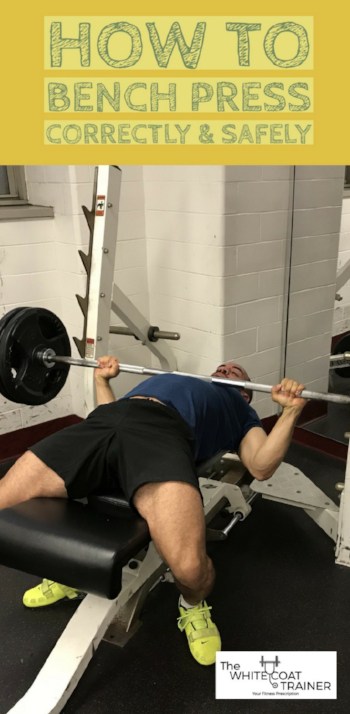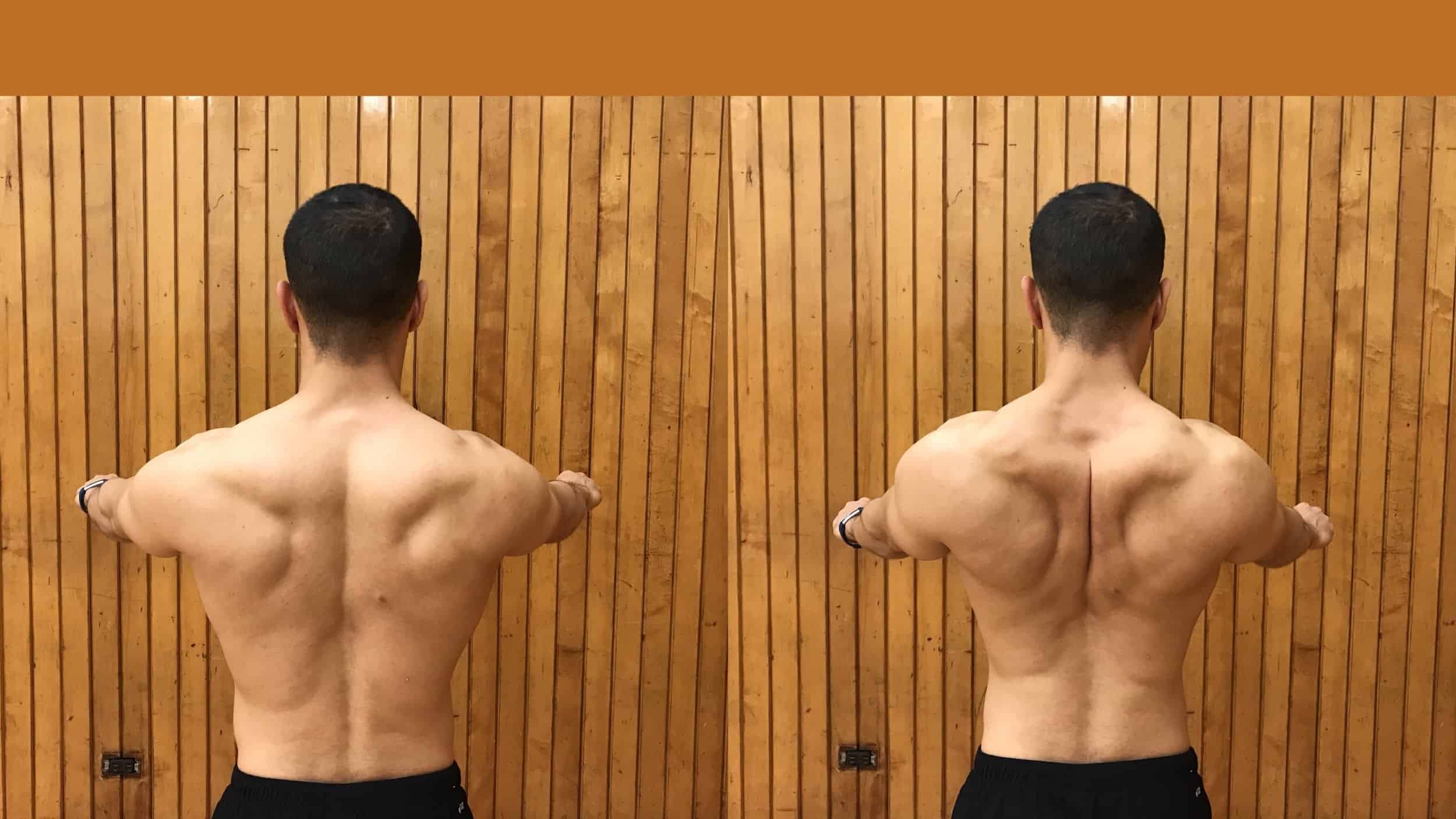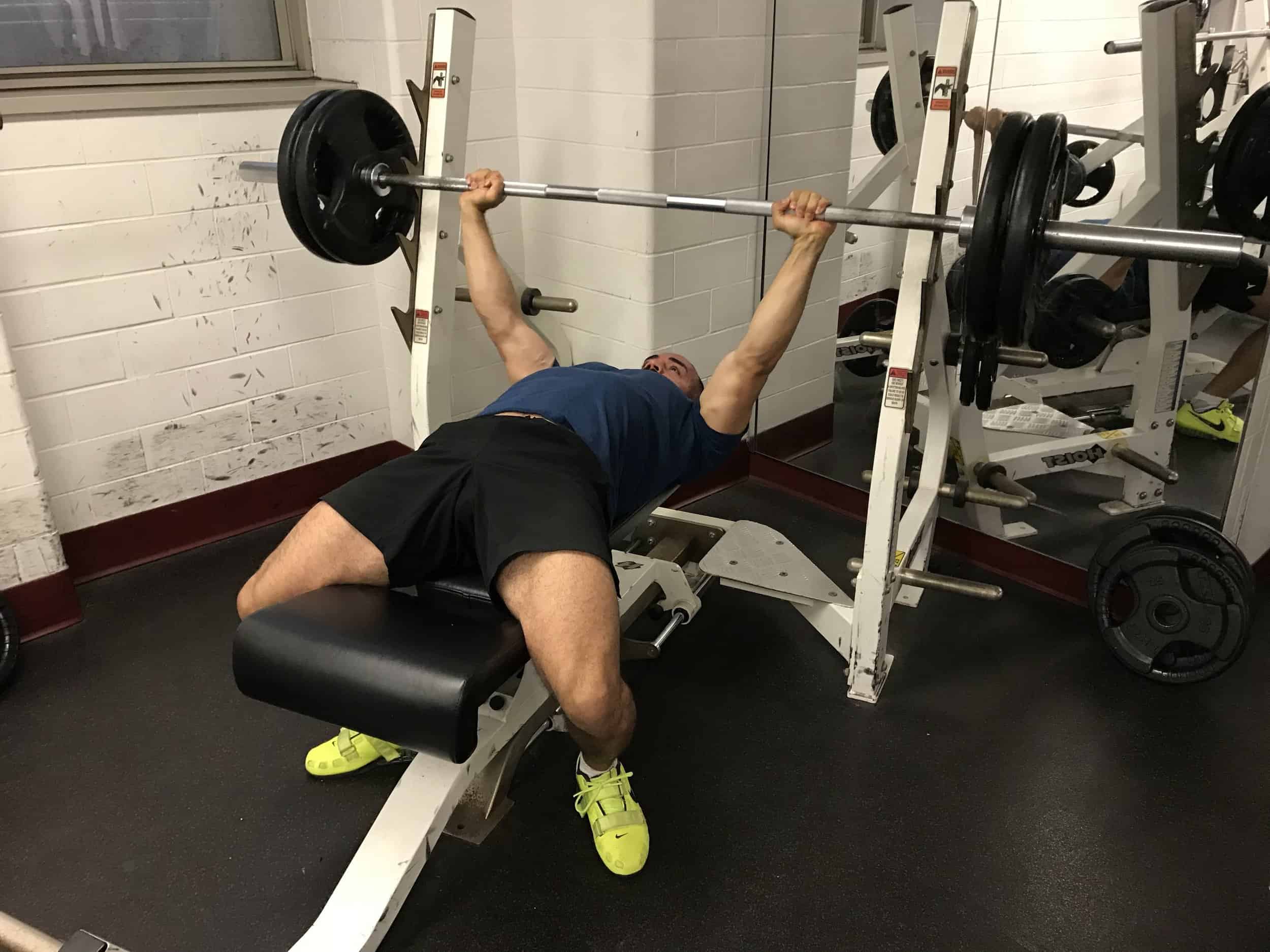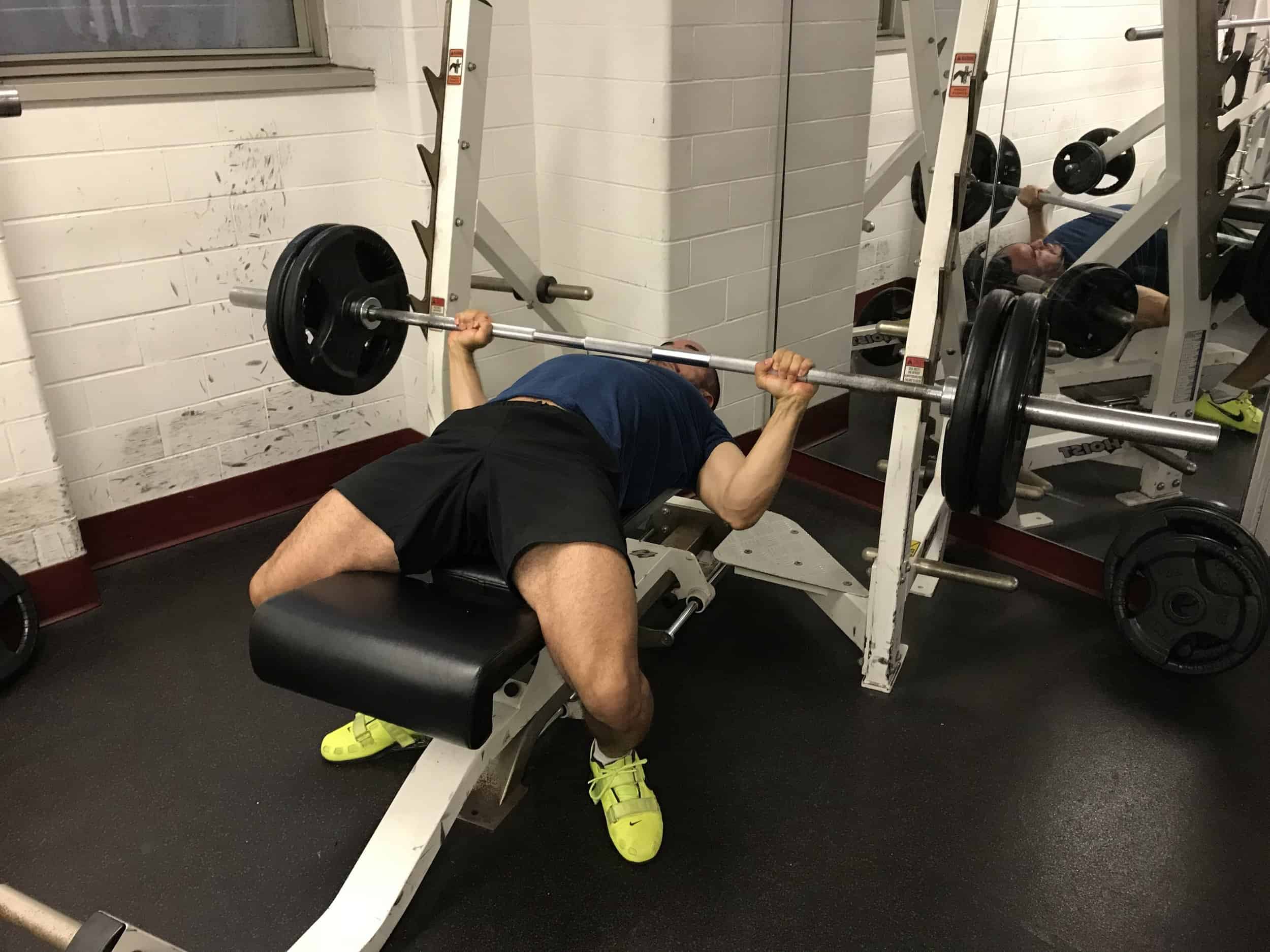The bench press is already the most popular exercise performed across the country. Unfortunately, many perform this movement incorrectly which can often lead to shoulder injuries.
Fortunately, there is a right way to do this exercise. If done correctly, the bench press is an excellent way to train shoulder stability. It strengthens the chest, shoulder, and tricep muscles.

BENCH PRESS FORM VIDEO
BENEFITS OF THE BENCH PRESS
- Teaches how to maintain a stable shoulder position for everyday movements
- Allows for the maximum number of upper body muscles to be trained simultaneously
- Encourages strength development of the chest, shoulders, and arms which improves lean muscle mass and fat burning
MUSCLES TRAINED DURING THE BENCH PRESS
- Anterior Deltoids
- Triceps
- Chest
- Forearms
- Glutes
PERFORMING THE BENCH PRESS
- Approach a bench press rack that has a barbell set at a comfortable rack height
- Retract and squeeze your scapulae together when laying on the bench. Maintain this retracted position throughout the entire lift. This is where most people perform the movement incorrectly.

- Set your grip at a distance that is wider than shoulder width. Keep your pinky fingers within the rings marked on the barbell
- Always wrap your thumbs completely around the bar
- Place your feet flat on the floor, directly under your knees, and point your feet straight or angled out up to 45 degrees

- Un-rack the bar and bring the bar out over your chest around the nipple line. Ensure that your scapulae are still retracted
- Begin lowering the bar by TUCKING your elbows at a 45-degree angle. DO NOT flare them out.

- Touch the bar to your chest just slightly below the nipple and pause for a fraction of a second
- Reverse the movement by simultaneously contracting your glutes (without elevating your butt off the bench) driving your feet into the ground, and pressing the weight up and slightly back towards your face
COMMON BENCH MISTAKES
BENCHING WITH A FLAT BACK
- This is simply a technical issue
- Begin by retracting your scapula while setting up and maintain this position
- Not performing this crucial step puts your shoulders in an unstable position
FLARING THE ELBOWS ON THE DESCENT
- This is also a technical issue
- Tuck your elbows to about a 45-degree angle while descending
- Flaring your elbows places a lot of stress on your pectoralis tendon and shoulder capsule
LIFTING YOUR BUTT OFF THE BENCH
- This is also a technical issue
- Try changing your foot position and concentrate on keeping your legs in a stable unmovable position
- Lifting your butt off the bench will create an excessive arch and subsequent strain in your lumbar spine
NOT PERFORMING A FULL RANGE OF MOTION
- People often perform half-reps because they mistakenly believe that a complete range of motion is bad for the shoulders
- If you maintain your scapulae retracted, your shoulder is in a stable un-compromised position
BENCH PRESS VARIATIONS

Alex Robles, MD, CPT / Brittany Robles, MD, MPH, CPT
Alex & Brittany Robles are physicians, NASM Certified Personal Trainers, and founders of The White Coat Trainer: a resource dedicated to improving the health and fitness of busy professionals using time-efficient strategies. Their advice has been featured in My Fitness Pal, Prevention, Livestrong, Reader’s Digest, Bustle, The Active Times, and more. Learn more about them here.

Could you explain a bit more or illustrate what is tuck your elbow at 45 degree? E.g. 45 degree between your upper arm and forearm or 45 degree from your body to the elbow?
Hi,It’s 45 degrees from your body to your elbow. If you look at the section titled "FLARING THE ELBOWS ON THE DESCENT," I am demonstrating a ~90-degree angle in the video, which is the incorrect way to do it. Instead, you should tuck your elbows so that they are closer to the body. In a close grip bench press, you will tuck your elbows even further to about a 20-30 degree angle from the body (i.e your elbows should almost touch the sides of your body).
Do you recommend doing this by yourself when you’re a beginner? I’m afraid of drop the barbell on my chest? Any way to prevent that from happening?
Yes, it can still be done as a beginner.
Two things that you can do –
#1: Use a very light barbell (15 lbs or so)
#2: Use a spotter (to help get the bar in the proper starting position and to ensure safety)
If both of these aren’t possible for you, then you can do the exercise with dumbbells.